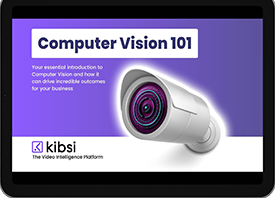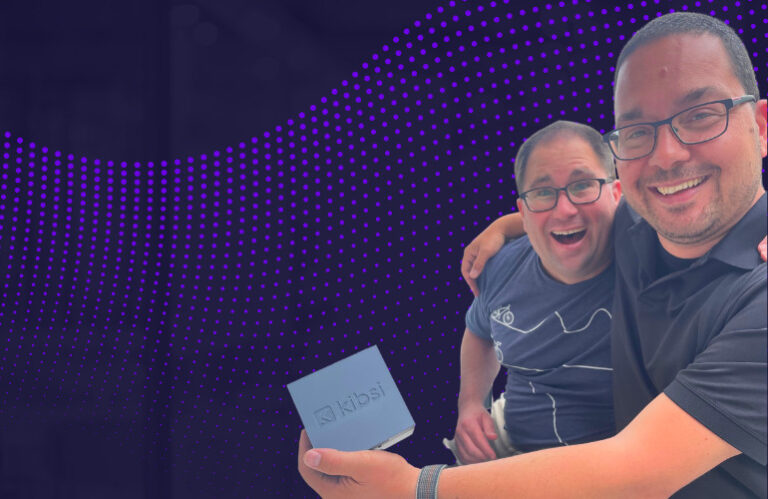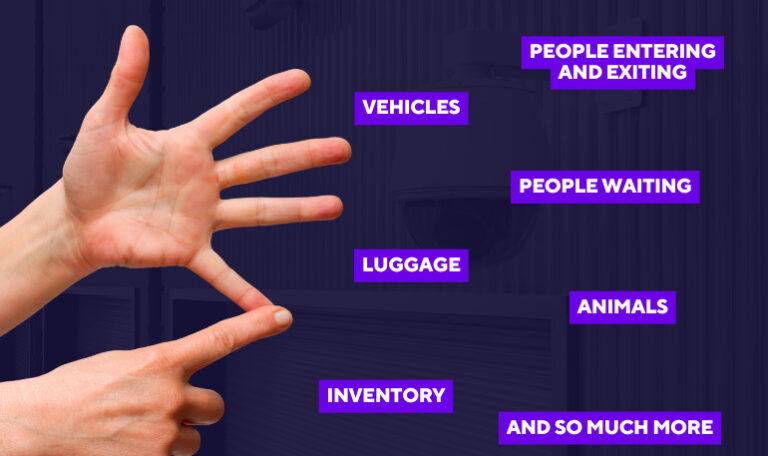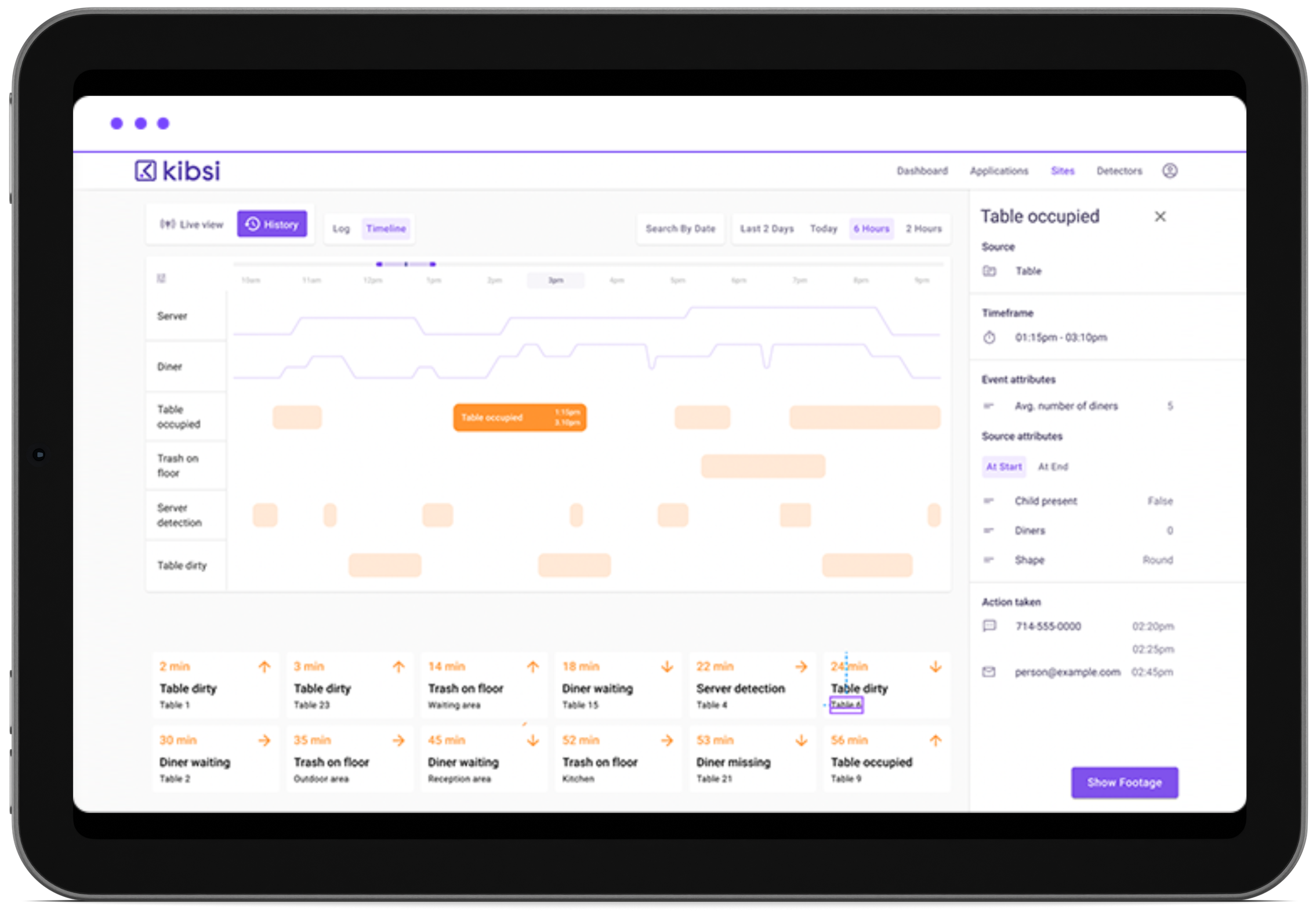The Challenge
We recently faced a challenge at Kibsi…a missing piece.
You see, we pride ourselves on the robust and flexible architecture options we support for our clients, and one popular option – especially in industrial environments – is edge computing. We sourced some edge devices for testing and laughed when we realized that they didn’t have backs on them! We certainly aren’t ones to let a challenge pass us by, so our fearless CEO, Tolga, got to work. He took the opportunity to break out the 3D printer that might have been gathering dust. After carefully measuring the device and where the new cover would fit, he then created a CAD drawing and, finally, created some custom 3D-printed Kibsi branded covers for our edge devices. We were certainly impressed internally, but the best part is how cool it made us look to the client we were testing with.
Of course, this got us thinking about edge computing and why it’s such a popular setup, especially for Kibsi’s computer vision platform. We thought others might appreciate a refresher on edge computing and why it’s worth a cool, Kibsi-branded device cover.
Get to Know Edge Computing
So, let me tell you about this gem of a technology we’ve been playing with here at Kibsi – edge computing. Now, this isn’t some newfangled thing, but it sure is a game-changer for our customers, especially those running the show in factories and warehouses. Today, we’re going to pull back the curtain on edge computing and let you in on why it’s such a big deal for anyone using computer vision.
Edge computing, in a nutshell, is like your local farmer’s market. It brings data processing right to your doorstep, at the edge of your network. Instead of trucking tons of data to a distant cloud or server for analysis, the processing happens locally, right where the data is being created. This neighborhood approach to data processing is what makes edge computing tick. And it’s catching on – Gartner reckons that by 2025, a whopping 75% of enterprise data will be produced outside of big, centralized data centers.
3 Reasons to Love Edge Computing
Now, why is edge computing such a rockstar in industrial settings like factories and warehouses? It’s all down to a few key reasons:
- Lightning-Fast Insights: Latency, the annoying delay in data transmission, can really throw a wrench in the works when it comes to making quick decisions. But with edge computing, data processing is done right where it’s created, slashing latency. This means insights in real-time, allowing organizations to react to situations swiftly, keep things running smoothly, and step up their safety game. According to Acceleration Economy, “Edge computing architectures can enable faster clock speeds, sample rates, or bit rates across a distributed system,” which is imperative for time-sensitive applications such as video-based computer vision in industrial settings.
- Savvy Bandwidth Use and Cost Savings: Video feeds can spew out heaps of data. As highlighted in one LinkedIn community knowledge article, “Only the essential or relevant data is sent to the cloud or the server, while the rest is processed locally or discarded. This reduces the amount of data that needs to be transmitted, which saves bandwidth and improves speed.” Sending all this to a central server for processing can really hog the bandwidth. Edge computing steps in and does the initial processing right on the edge devices, easing up on the network bandwidth and keeping costs in check.
- Top-Notch Security and Privacy: Factories and warehouses take data security and privacy very seriously. Edge computing keeps critical data close to home, within the local network, beefing up security, helping to meet compliance rules, and keeping data integrity intact. “Processing data closer to end devices allows for earlier threat detection and mitigation, before attack agents are able to penetrate mission-critical operations,” is just one of several security benefits identified by Section.
Kibsi + Edge Computing
So, how does all this fit into the Kibsi universe? Well, we’ve embraced the potential of edge computing and baked it right into our computer vision platform. With edge devices, our customers unlock a treasure trove of benefits that bring a whole new dimension to video intelligence and computer vision in industrial settings.
Real-Time Decision-Making: By harnessing the power of edge computing and our robust computer vision platform, Kibsi lets organizations make decisions on the fly based on real-time insights from video feeds. Instant detection of oddities, timely alerts, and the ability to respond proactively optimize operations, ensure safety compliance, and drive efficiency gains.
Scalability and Flexibility: The power to leverage edge devices gives Kibsi unmatched scalability and flexibility, allowing businesses to adapt to ever-changing industrial landscapes. Edge devices can be easily deployed and scaled to accommodate more cameras, expand into new areas, or blend seamlessly with existing infrastructure.
An article published by Kyndryl explains, “Edge computing is a less expensive alternative to a dedicated data center that allows enterprises to grow their computing capability through the combination of IoT devices and edge data centers. Processing-capable edge computing devices also help reduce growth costs, as adding more devices doesn’t greatly increase the network’s bandwidth demands.”
Local Data Processing: With edge computing, Kibsi minimizes dependence on cloud connectivity for video data processing. The edge devices serve as a robust first line of processing, analyzing video feeds locally and sending only the important stuff to the cloud.
Cost Optimization and Efficiency: Edge computing with Kibsi translates to significant cost savings. By reducing the amount of data sent to the cloud and lessening the need for extensive cloud infrastructure, organizations can keep costs down.
Reliability and Resilience: In industrial settings, downtime is a big no-no. Edge computing offers enhanced reliability and resilience. By processing video data locally, edge devices ensure continuous operation, even when the network plays up or connectivity is patchy.
So, edge computing is more than just a powerful ally in the realm of video intelligence and computer vision. It’s a trusty sidekick, especially in bustling industrial settings like factories and warehouses. With Kibsi’s integration of edge devices, we’re unlocking a whole new world of possibilities – real-time insights, scalability, cost optimization, heightened security, and operations that just don’t quit.
Conclusion
Edge computing is letting organizations tap into the full potential of computer vision, totally revolutionizing their industrial environments. And the best part? At Kibsi, we’re just getting started. We’re always on the hunt for ways to push the envelope, and edge computing is just another tool in our toolkit to help organizations transform their use of video intelligence and computer vision.
So, join us for this wild ride as we uncover new insights, streamline operations, and shape the future of industrial environments. It’s going to be one heck of a journey, and we can’t wait to see where edge computing will take us next. Remember, it’s all worth a cool, Kibsi-branded device cover.








